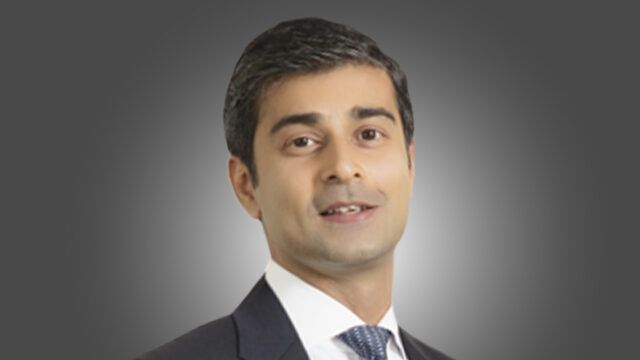Investors should consider increasing their allocation to private credit this year, particularly in areas like middle market direct lending because of the retrenchment from banks, according to Aditya Monappa (pictured), global head of multi-asset business development at AllianceBernstein.
Monappa noted that allocations to alternatives generally are low in Asia compared with the rest of the world, although he said that he favoured private credit over private equity because of the various headwinds the latter faces, including the impact of higher interest rates weighing on returns.
In contrast, private credit has benefited from the fact that it mostly comprises floating rate notes, although Monappa cites long-term structural trends, most notably the pullback from banks because of Basel III regulations as being the most important catalyst.
“With private credit, the supply equation has changed. We’ve seen this retrenchment of traditional credit providers. The net credit growth in the US, for instance, is really coming from non-bank sources. So, because of these very stringent capital requirements that have been put in place on banks, it has limited their ability to lend, particularly to areas like the middle market segment,” he said.
Monappa said that there was still a place in portfolios for private equity if you are able to get some exposure to some of the top quintile managers, although he noted that overall he did not expect returns to be much higher than what you would get from public markets.
Still, Monappa describes equities as likely to provide “a bit of a slower grind” this year, on the back of some of last year’s headline performances. He favours quality and defensive companies that will benefit from their pricing power, notably in the consumer staples, utilities and healthcare sectors.
On China, he is cautious, noting that the market has yet to find a floor on sentiment, although he said there were opportunities elsewhere in emerging markets, singling out Korea, India and Taiwan in particular.
Fixed income quality and duration
On fixed income, in contrast, he favours exposure to the Latin American economies given how a number of their central banks are further ahead in the process of cutting interest rates. Overall, he also favours quality, preferring investment grade over high yield, as well as duration.
“We’ve been extending duration over the last few months. In some ways, we were perhaps slightly early as we saw some pain over the August-September-October period. But some of that has been vindicated in the last few months through early November and the early part of December,” he said.
“I think there is a case to add duration to the portfolio from a few perspectives. One is obviously the yields on offer are obviously a lot more compelling than what they’ve been over many, many years now.”
“But I also think the defensive characteristics and that diversification within the portfolio is beginning to reassert itself. So, I think US Treasuries, should you see a geopolitical shock, could provide defensive characteristics to the portfolio.”
Overall, he is adamant that investors should not wait to sit in cash as many of them did last year, noting that investors stand to benefit by allocating to fixed income both from the higher coupon and the potential for capital appreciation as interest rates fall.
“Tactically, last year, you could make a case for cash. I think cash rates after many, many years are at a level where at least on a short-term basis, I think holding some of your portfolio in cash made sense. But as we look forward, I think branching out of cash makes sense,” he said.

















